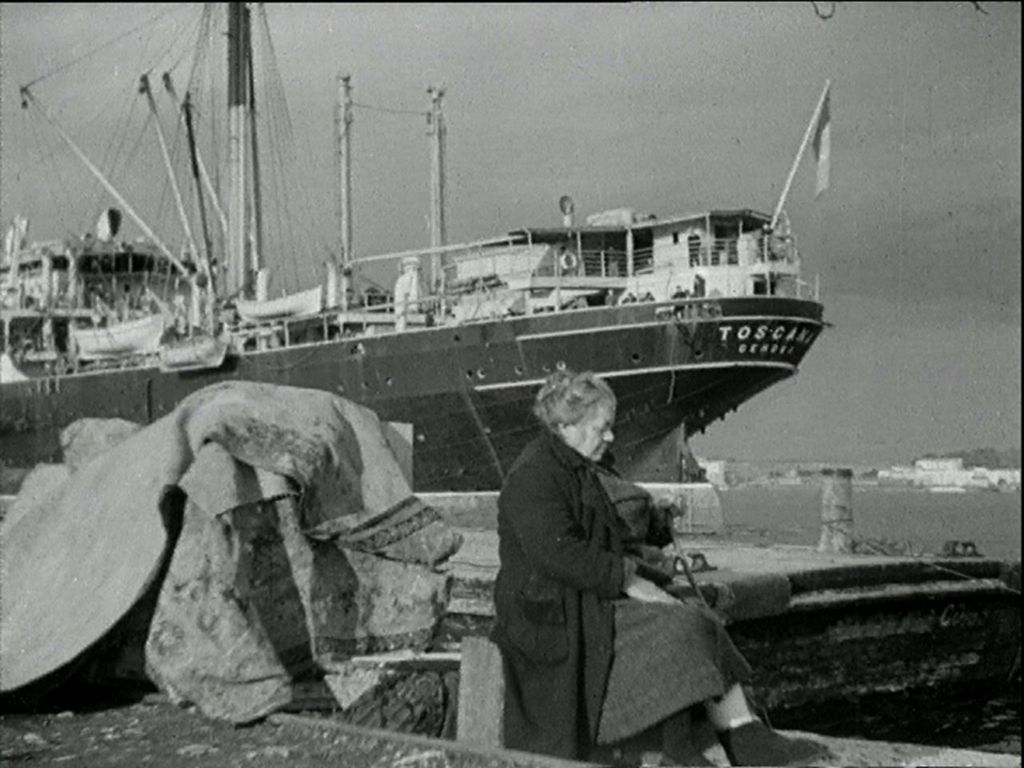La città dolente, Mario Bonnard

Mario Bonnard's feature film La Città Dolente could hardly be described unambiguously. We are witnessing a work that, in the years when it was filmed, plowed the fallow ground from a technical point of view with a skillful combination of documentary and feature film, while at the same time there is a distinct propaganda note in it, which is already one-sided in its definition. The film, made in 1948, is important, because it is the only one that tackled the extremely sensitive subject of the exodus of Italians from Istria in 1947.
Due to the political situation in Pula, the filmmakers had no choice and were forced to shoot on Italian territory. The interiors were recreated in Rome's Cinecitta, and an approximation of the Istrian landscape was found in nearby Civitavecchia. On the other hand, the documentary material that was used and skillfully edited was filmed in Pula, where Gianni Alberto Vitrotti and Enrico Moretti shot the documentary "Addio Mia Cara Pola" a year earlier.
The work, the script of which was co-written by the cult director Federico Fellini, did not reach a large audience when it was released in 1949 and was soon forgotten, which can also be attributed to the sensitive subject of the film. The film on 35 mm tape, which was donated by the production company Scalera Film to the Roman Istituto Luce was restored to its former glory by Cineteca del Friuli in 2006.
Announcements/
Otvoritev retrospektive Oriente Vzhod / Occidente Zahod – Meja skozi film in zgodovino
31. 03. 2025We warmly invite you to a full-day film program marking the opening of the retrospective Oriente Vzhod / Occidente Zahod – The Border Through Film and History. The program will explore life in border regions, both past and present, through carefully selected film screenings, conversations with creators, a roundtable on the advantages of multicultural border spaces, a special film walk through Gorizia, and an evening opening, followed by the screening of both archival and contemporary short films.
Cinema in Udine
07. 01. 2025To discuss the history of cine-club culture in Udine, one must start with Guido Galanti, who in 1930 founded Cine Club Udine—the third cine-club in Italy in chronological order. Alongside him, Renato Spinotti (Dante Spinotti’s uncle) must also be mentioned. In 1934, Cine Club produced the 16mm medium-length film Giornate di sole (Sunny Days), a comedy directed and performed by Galanti, with cinematography by Spinotti. The opening title card featured a hand-drawn depiction of the angel on Udine’s hill and the inscription “La Galanti Film presenta” (Galanti Film Presents). Author: Giorgio Placereani
Trieste – A World in One City
07. 01. 2025Today I will attempt to summarize the development of cinematic culture in Trieste. I will discuss some well-known facts, such as the favourable view of cinema held by Trieste’s writers and intellectuals, or the city’s role as a bridge between Western and Eastern cinema. However, I also want to highlight a less discussed aspect: the presence of women in Trieste’s cinematic culture over the years. Author: Paolo Lughi

